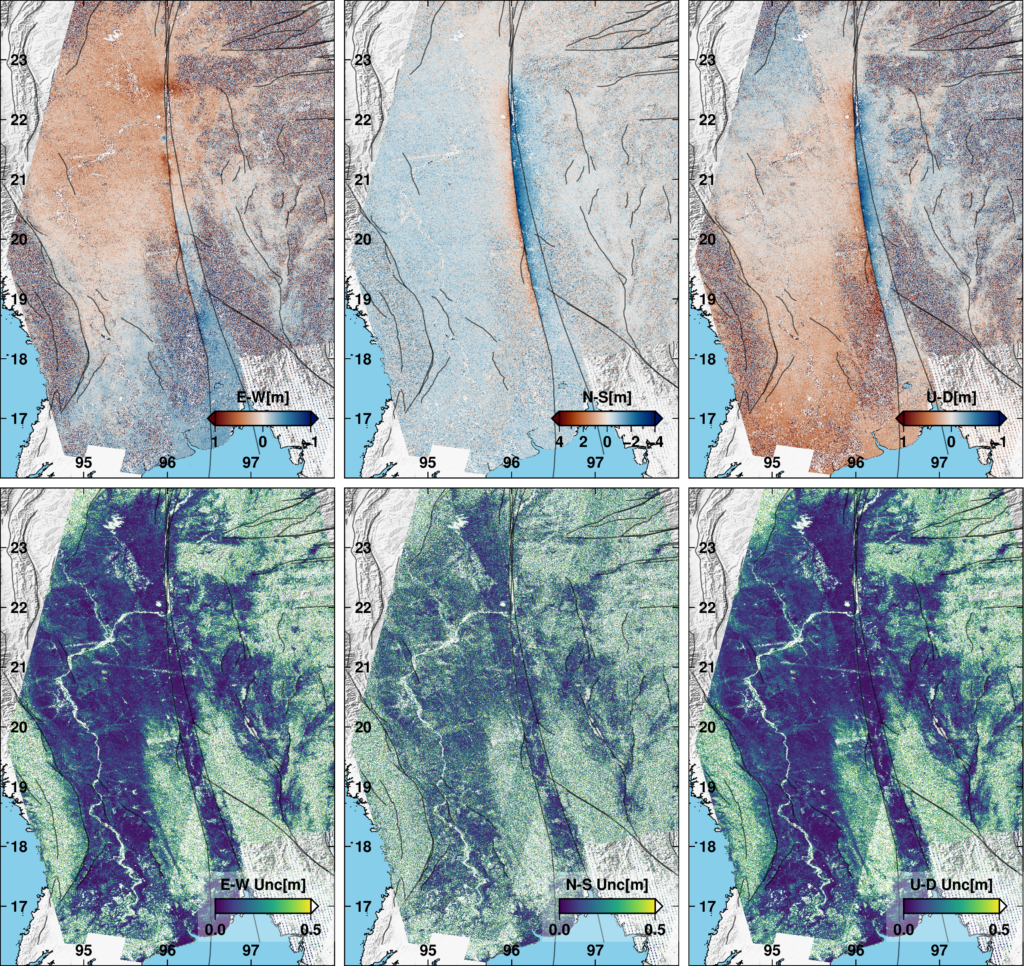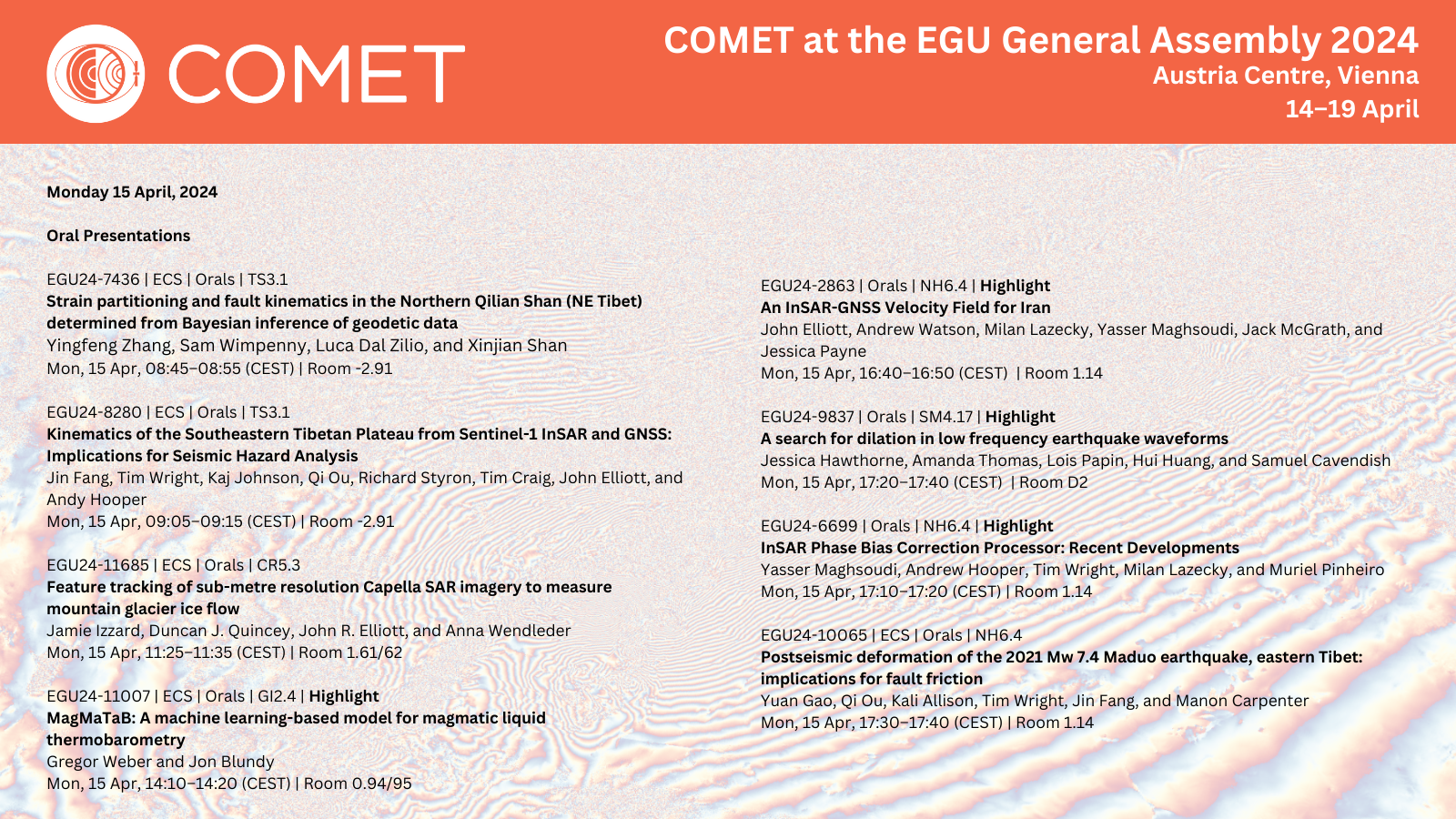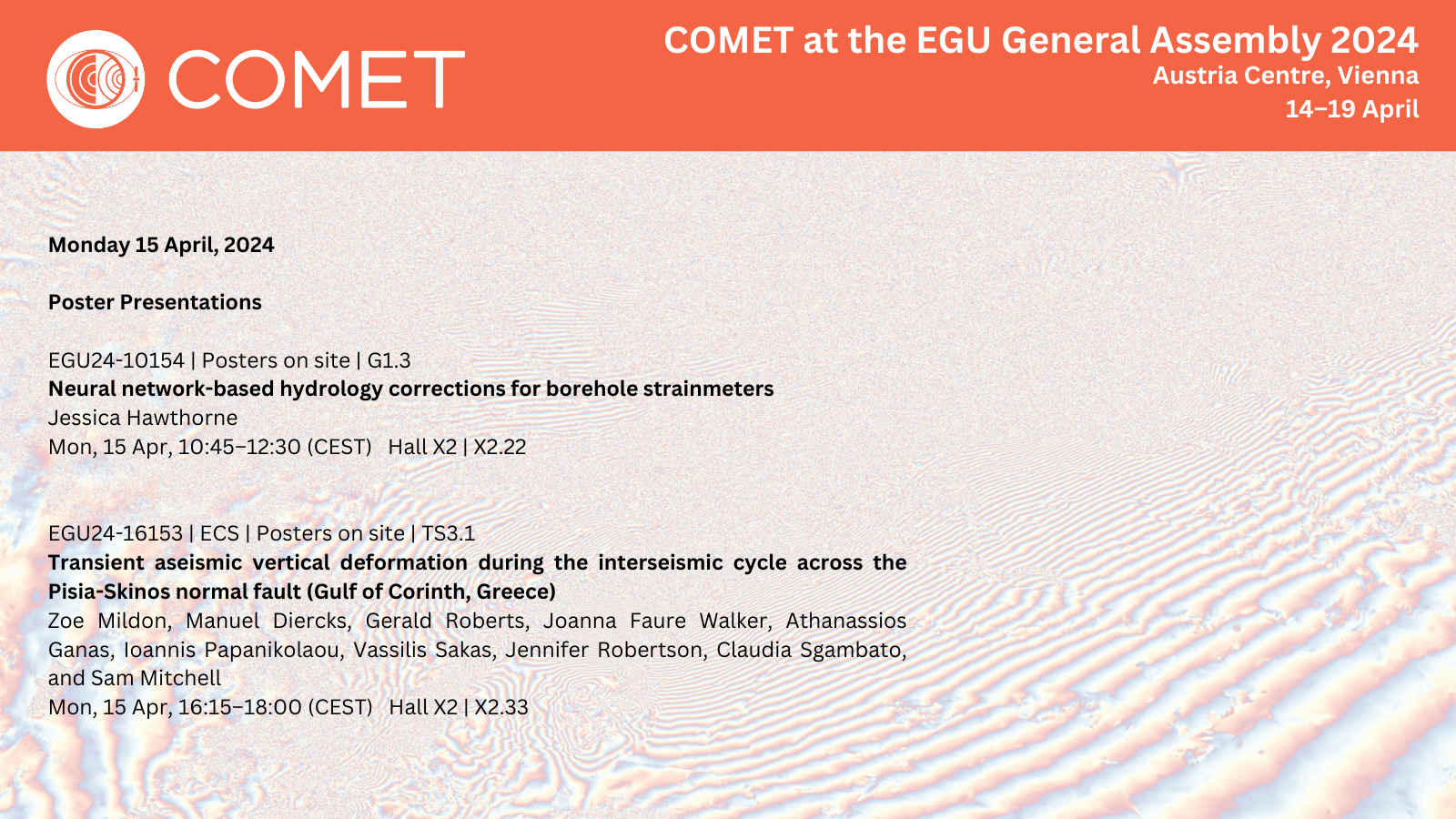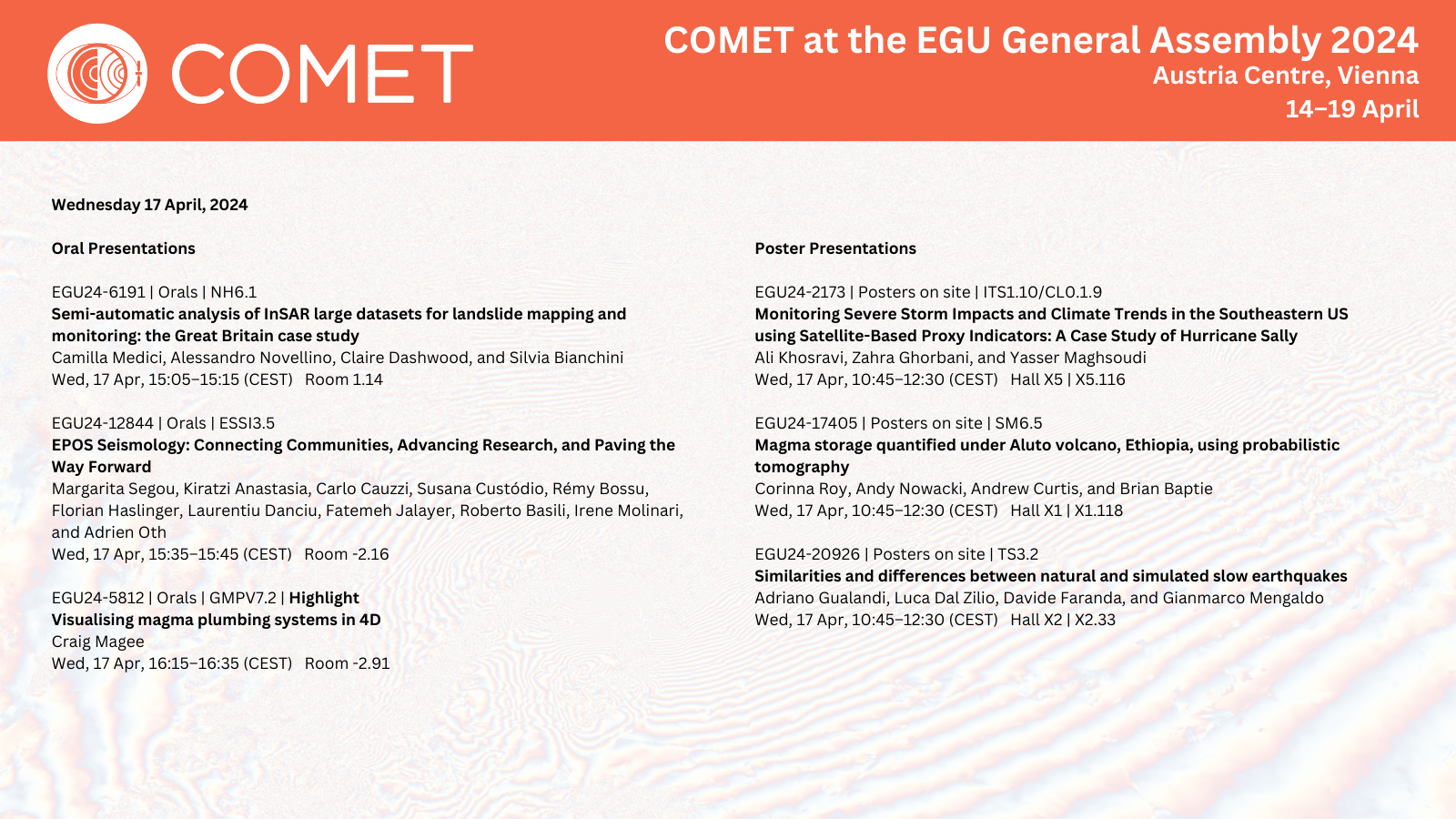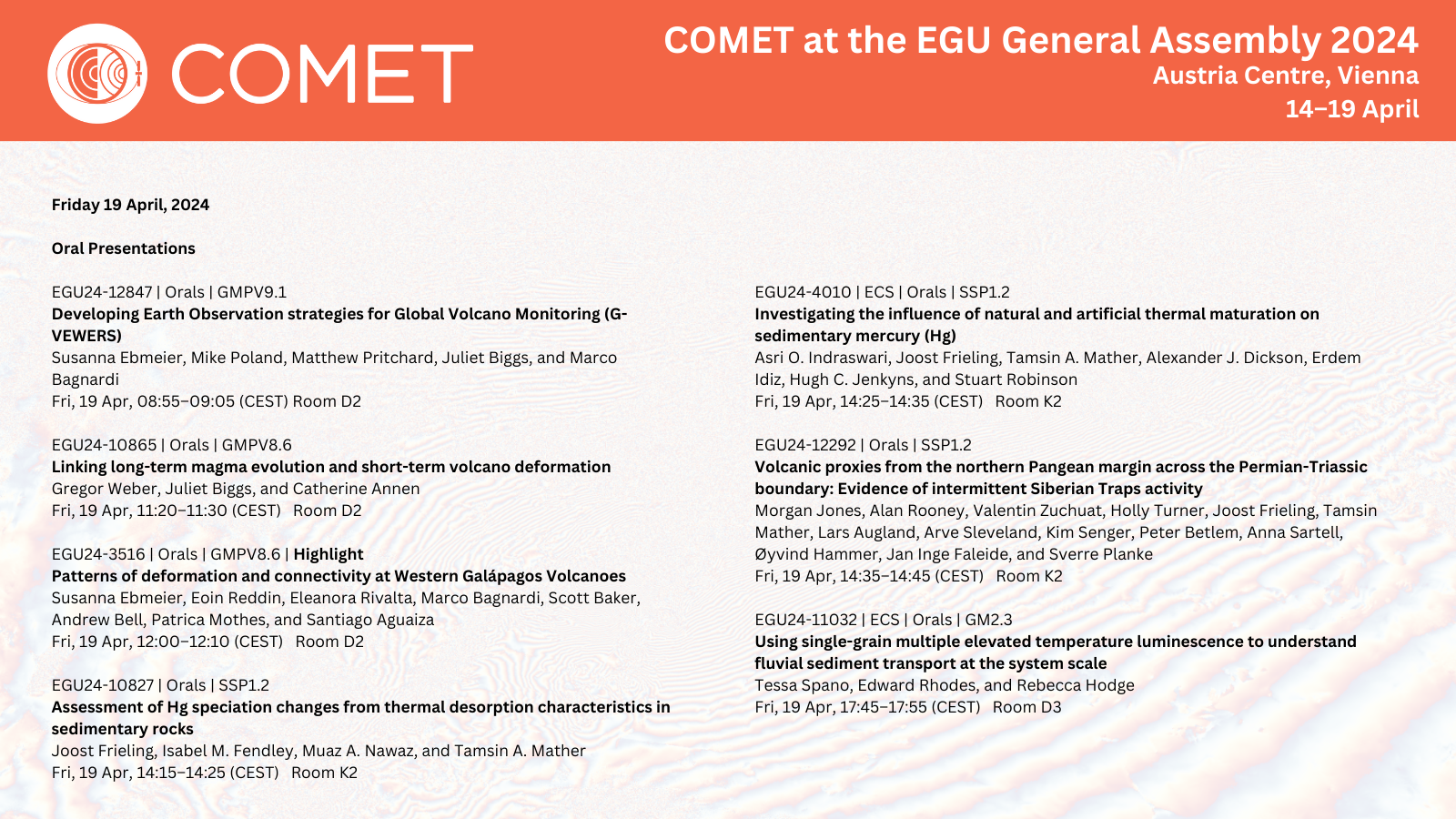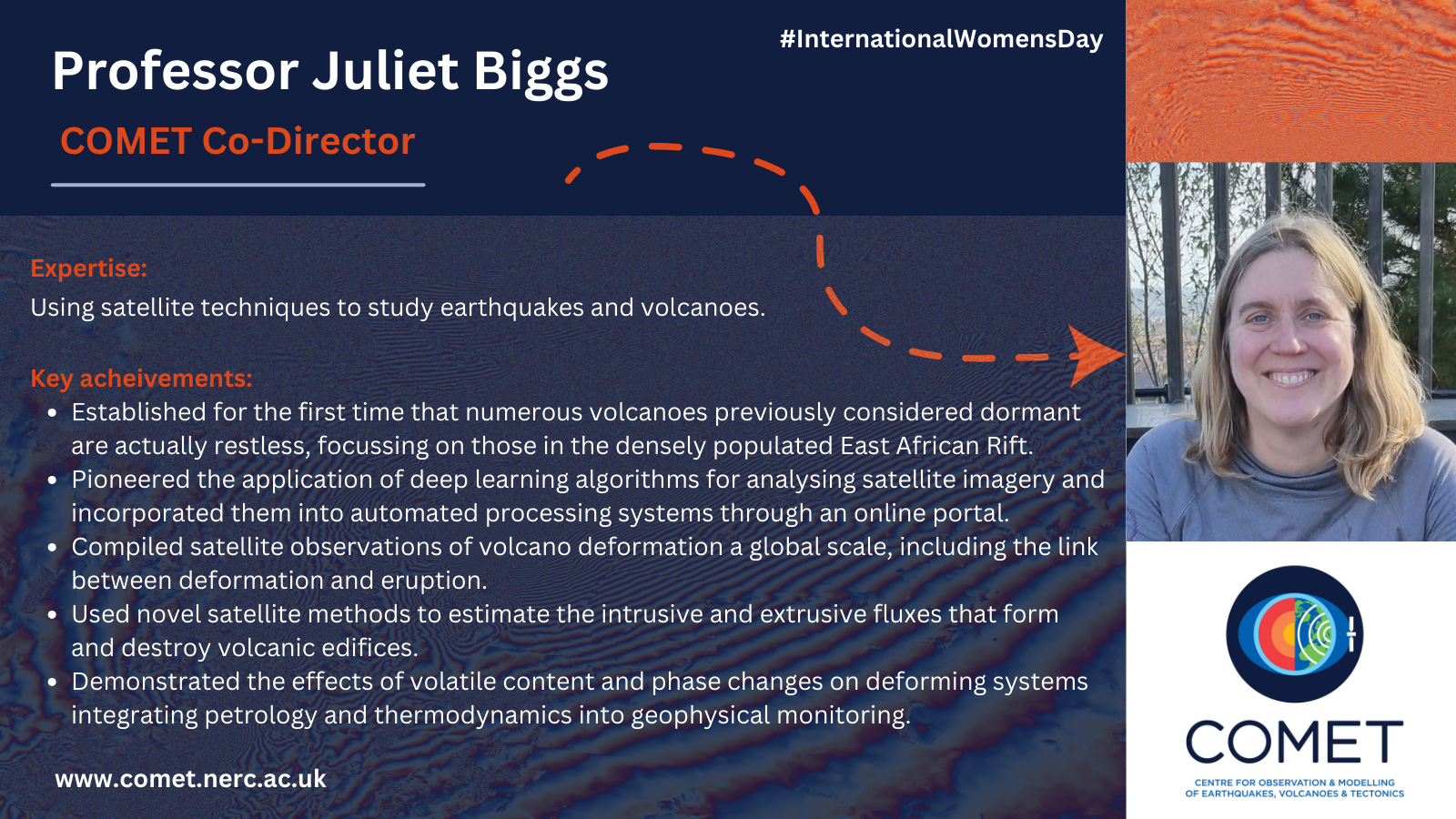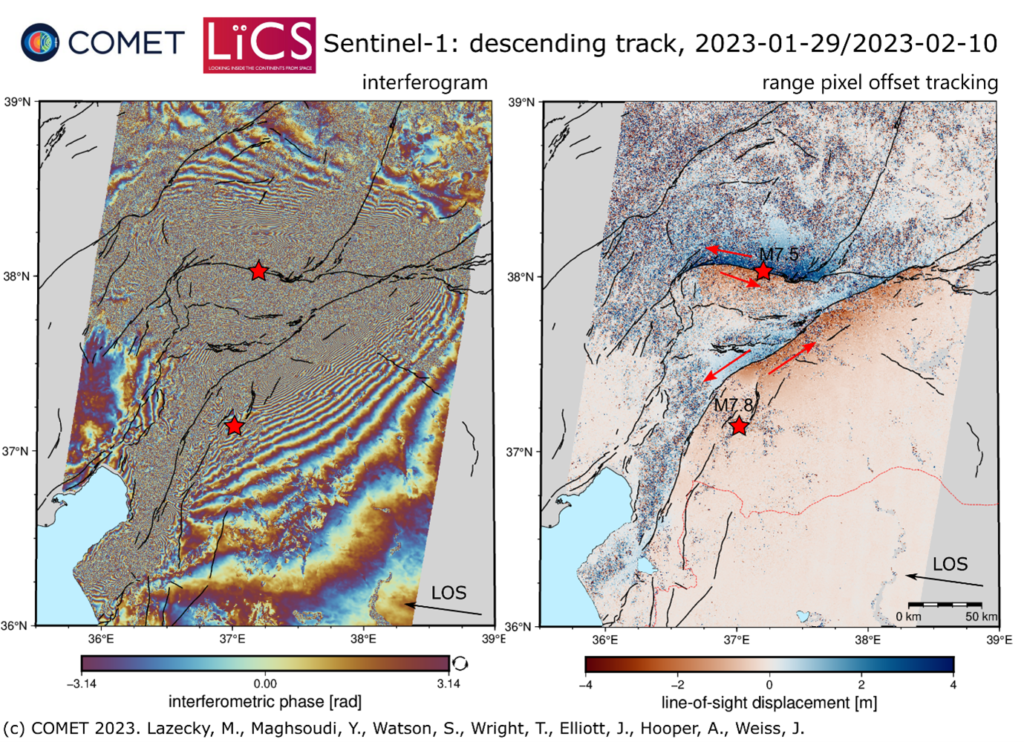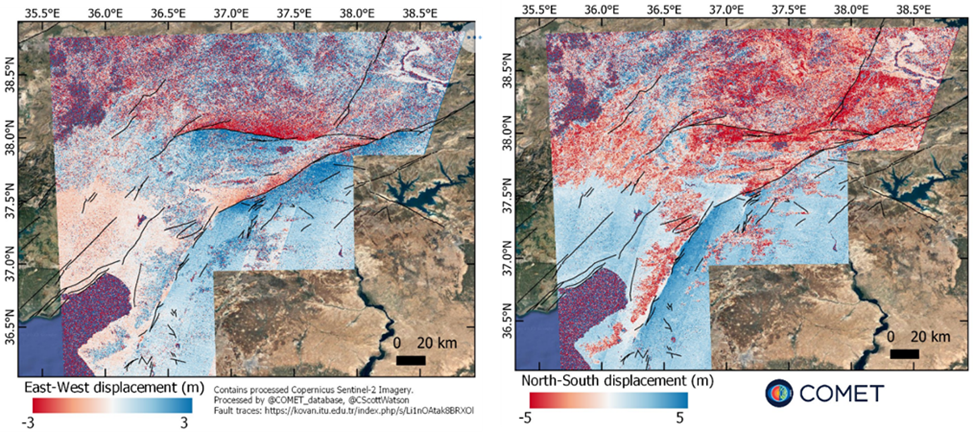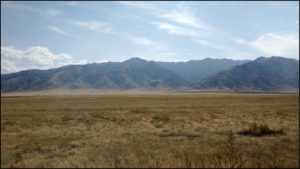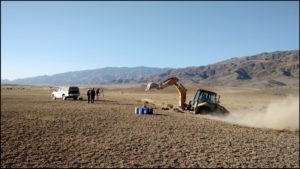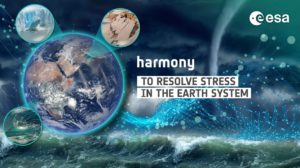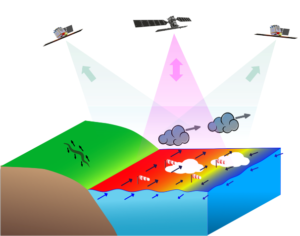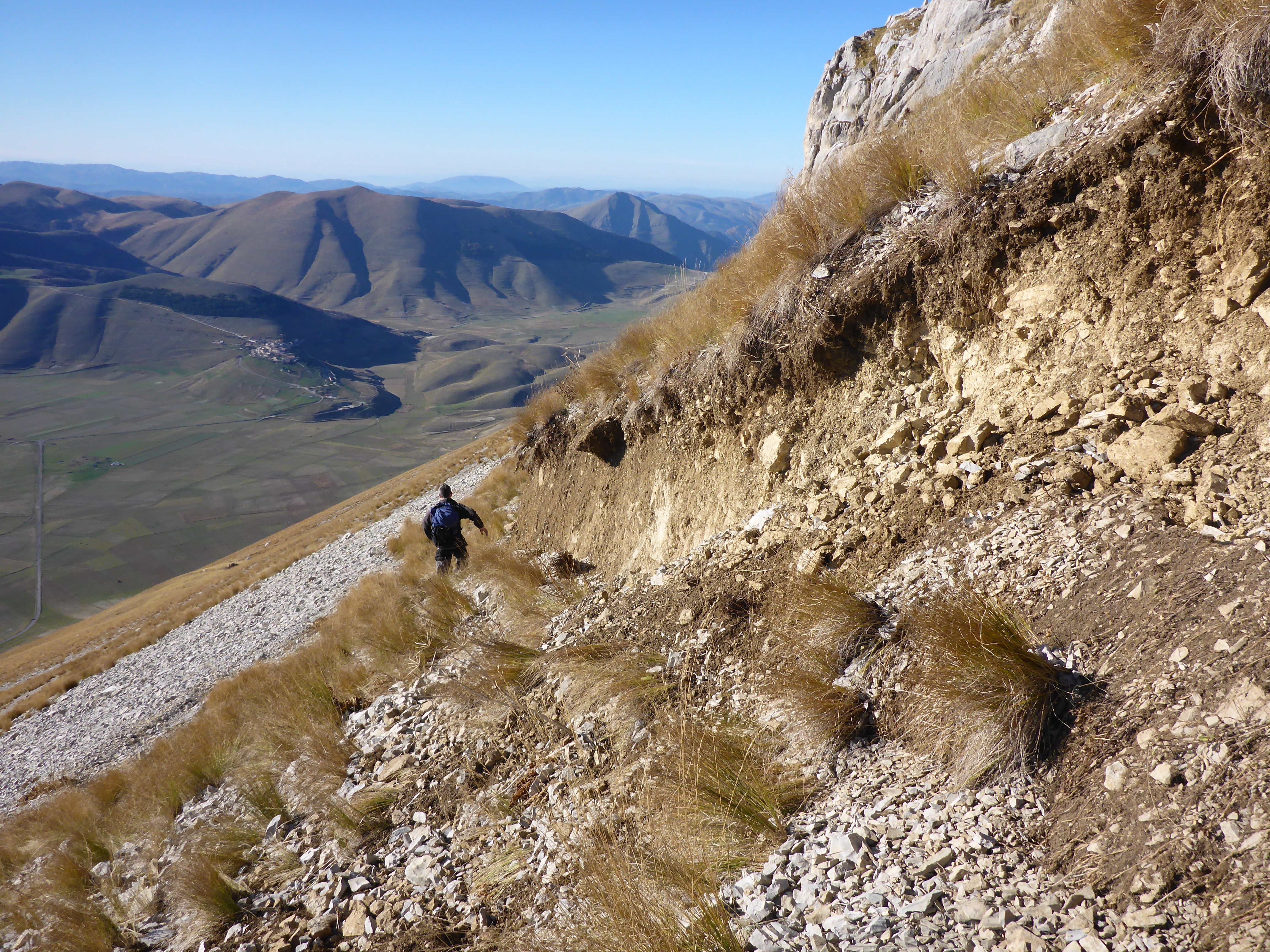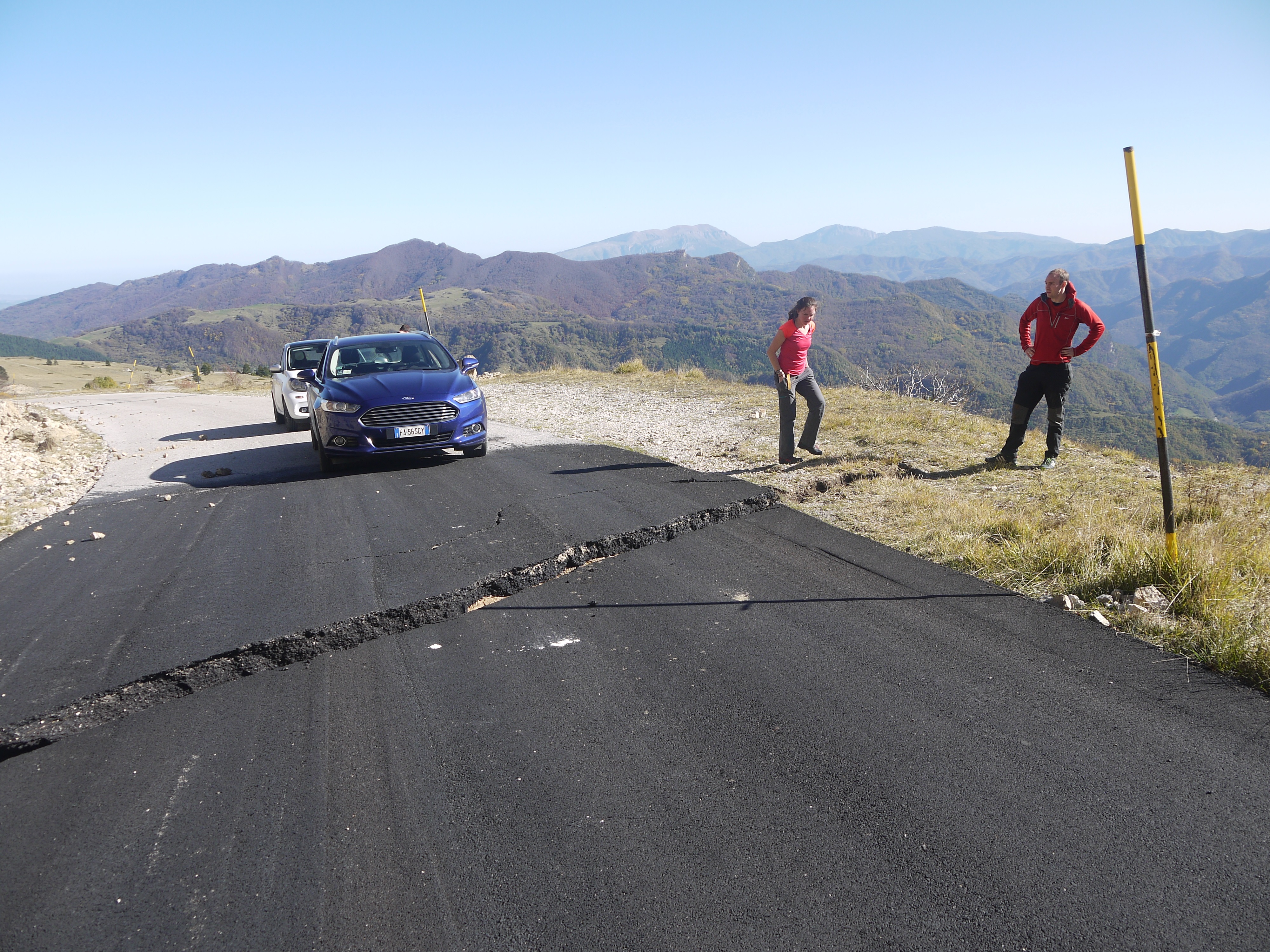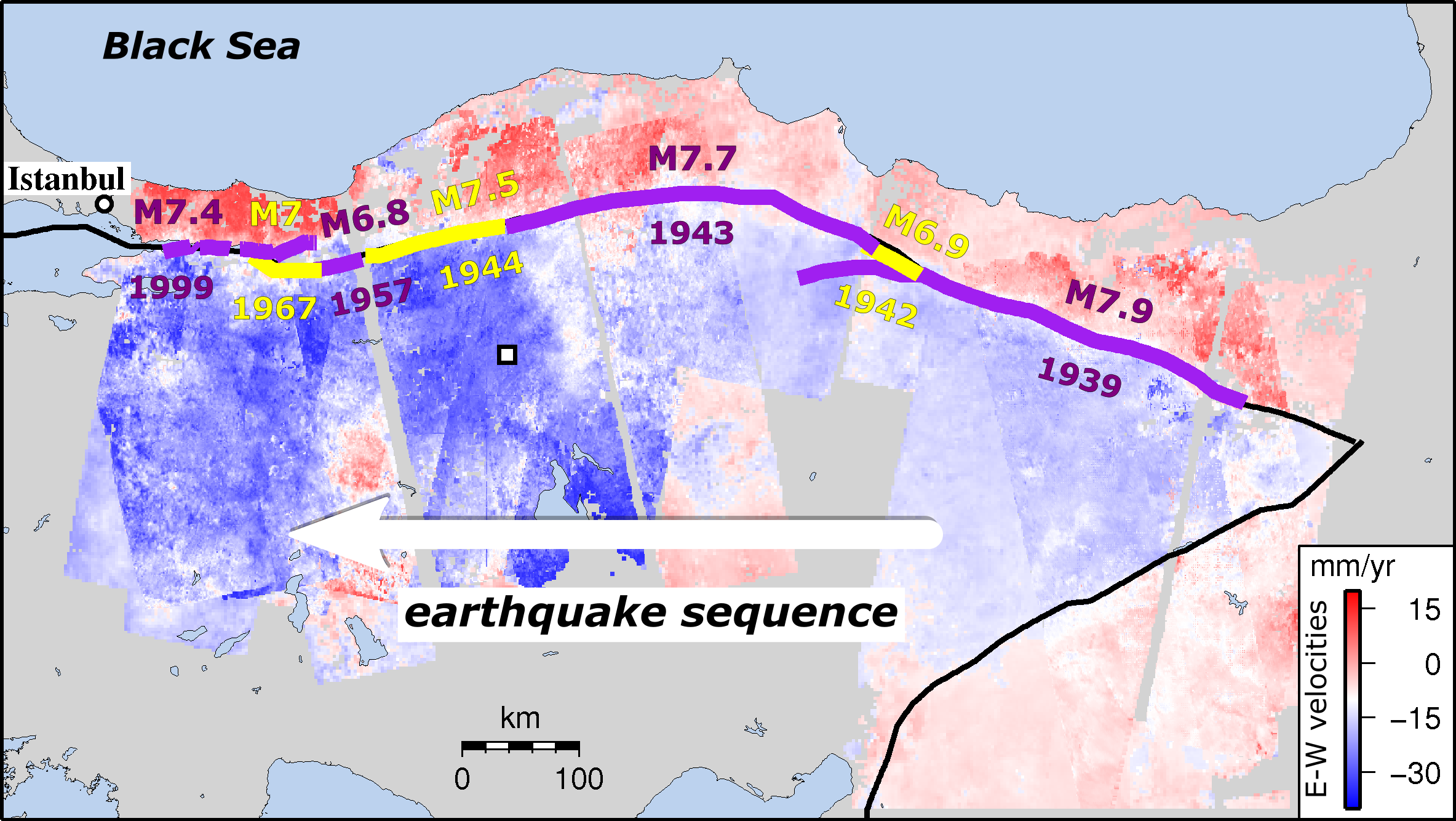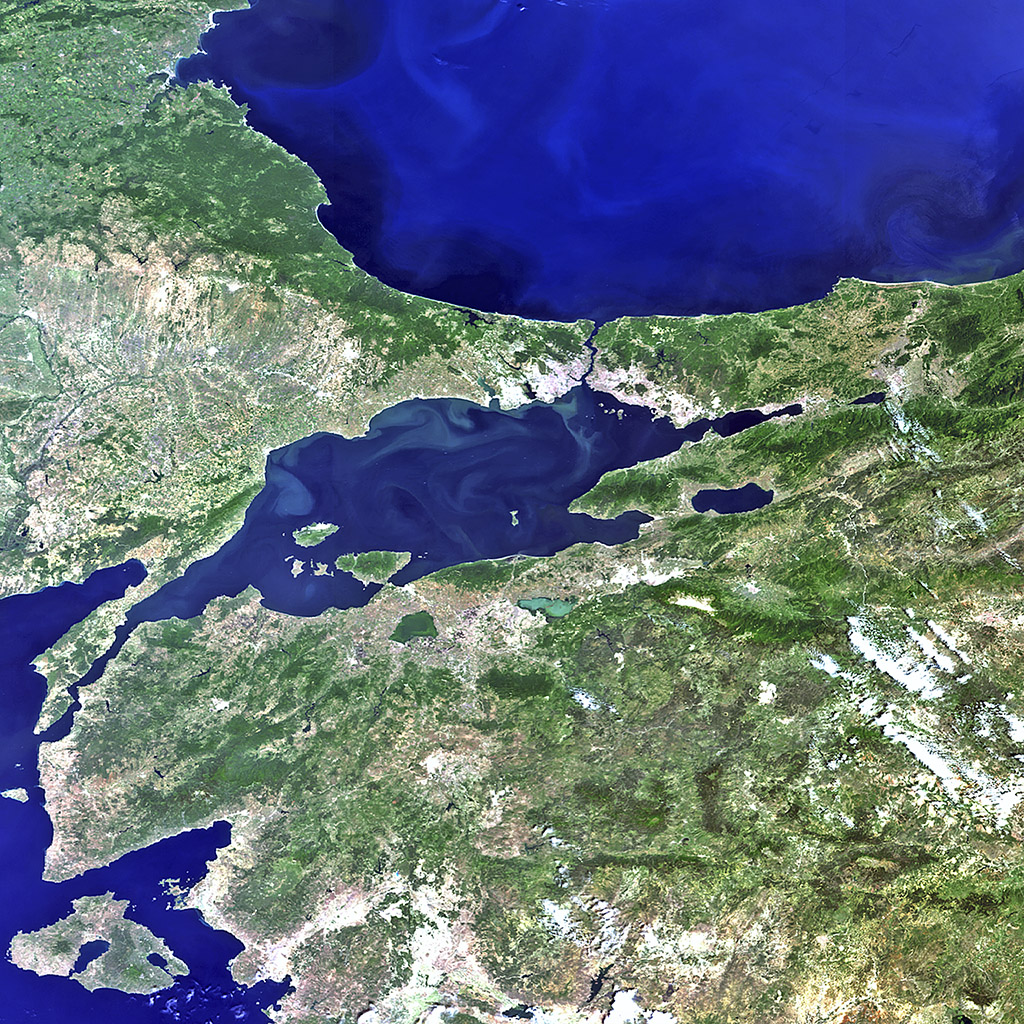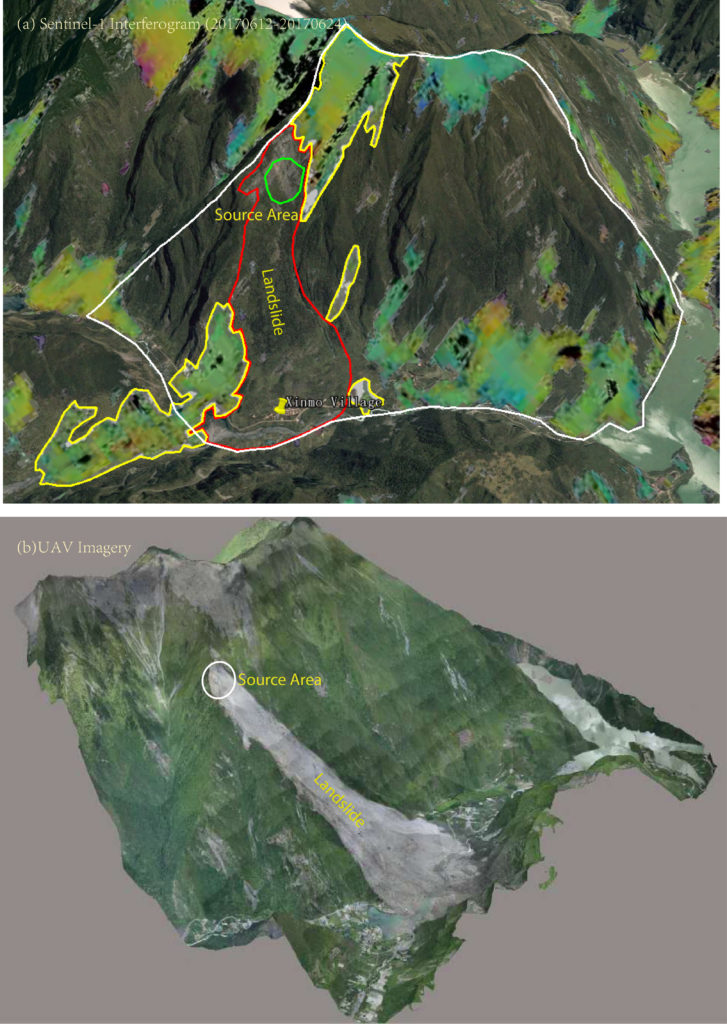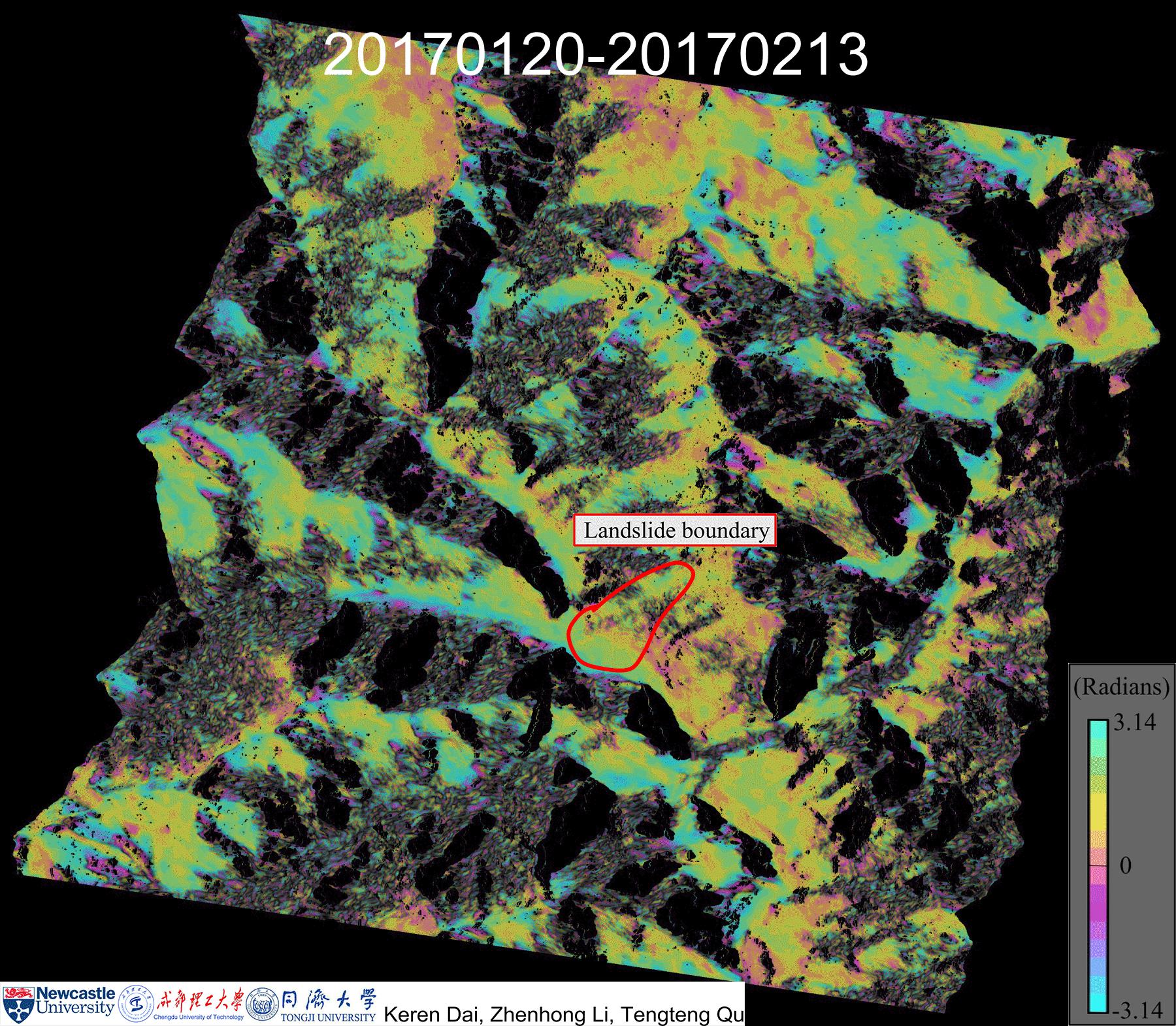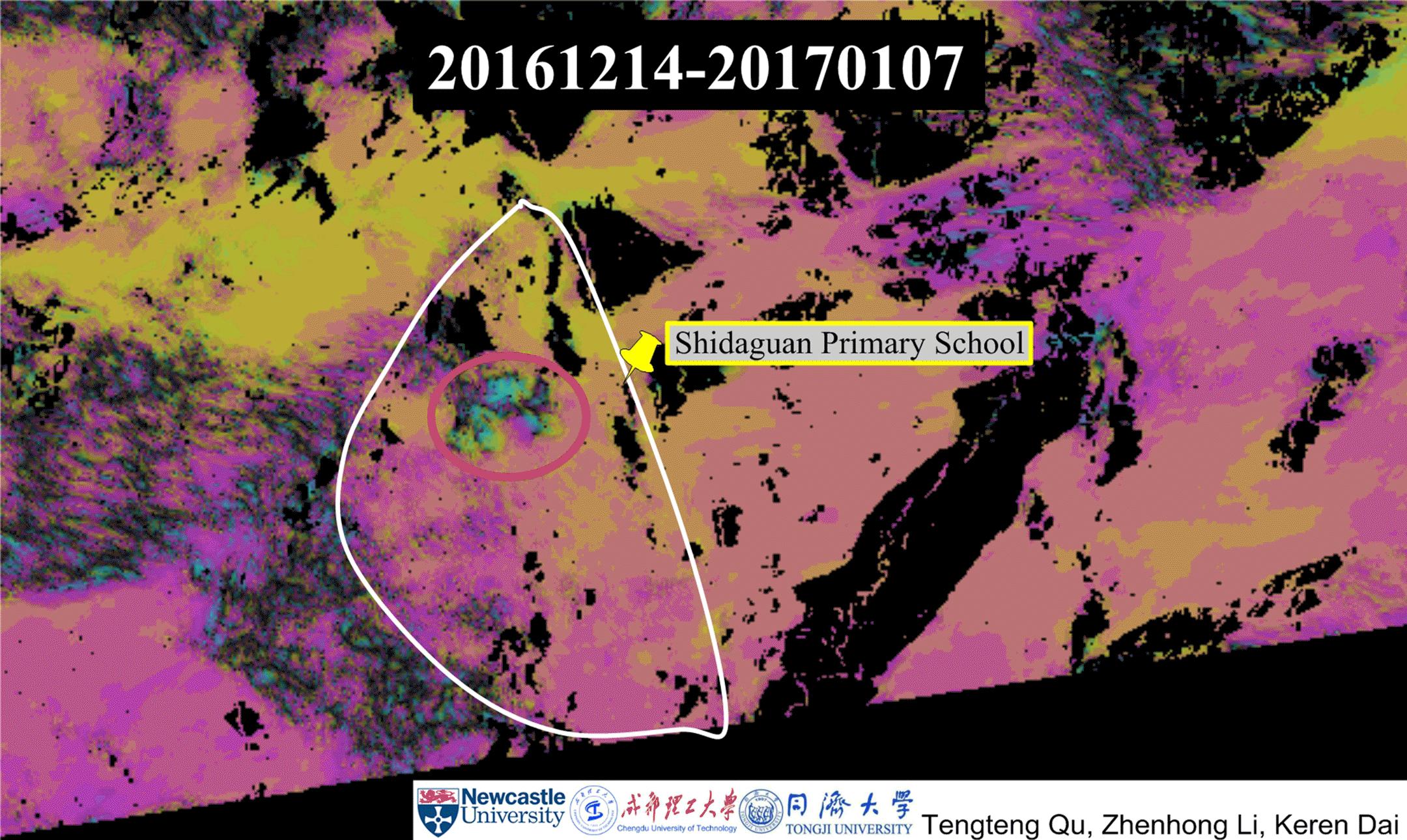A personal view from COMET* director, Prof Tim Wright
14 February 2023
We have all been shocked and horrified by the pictures coming from Türkiye and Syria over the past week following the two large earthquakes that happened on 6 February. COMET aims to generate and freely distribute robust scientific satellite deformation data sets following all moderate-large earthquakes on land. These can assist the humanitarian and scientific response.
Here I want to briefly explain COMET’s approach to responding to an event like this from my perspective not just as COMET director, but also as a scientist who has been involved in responding to many earthquakes using satellite deformation data and who has been working on active faulting in Türkiye for my entire career.
Deformation data from satellites are now a fundamental data set for understanding what happened in an earthquake, complementing the information that is available from seismology and from field studies. Deformation data shows, very precisely, which faults moved in an earthquake and by how much. Earthquakes are not point sources – they involve slip on faults. As earthquakes get larger, they involve larger/longer faults with increasing amounts of slip. Understanding how much and where slip occurred on a fault helps us understand the amount of shaking that is likely to have been experienced in different locations – distance to the fault is a primary control on the intensity of shaking.
In COMET, we have been developing a service to automatically produce ground movement data sets from radar satellites following all earthquakes bigger than Magnitude 5.5 that are likely to impact the land surface, and are now a trusted source for these data sets. This is possible because the Sentinel-1 satellites, part of the European Commission’s Copernicus programme, have a systematic acquisition strategy over tectonic and volcanic areas, something that COMET worked with the European Space Agency to help define. We produce results from satellite data as fast as possible following the satellite acquisition, make them available to the public via a dedicated portal, and typically let people know about them using the @NERC_COMET and @COMET_database accounts on twitter.
In the case of the Türkiye earthquakes, the data sets that we produced in COMET, which was also analysed by other international groups, show that the fault that ruptured in the initial Magnitude 7.8 earthquake was a 300 km long section of the East Anatolian Fault, and the fault that ruptured in the second large earthquake, a magnitude 7.5, was over 100 km long and occurred along a different branch of the same fault system. In UK terms, the length of the first fault is about the same as the distance from Bristol to Hull; and is close to the distance from London to Paris. This great extent is one of the reasons why the devastation has been so widespread and horrendous. Both earthquakes occurred on mapped faults and in areas where national maps of seismic hazard required the strictest building codes.
We believe it is important to analyse satellite data as quickly as possible and to be open and transparent with the results, sharing them with the wider community and allowing people to use them in whatever way they wish. For most earthquakes, we now have data within a few days of the event, and we post results within a few hours of the satellite data acquisition, whether there is any media interest in an event or not. We would like to be able to do this within a few hours of every event, and with new satellite systems from the Europe, the US/India, Japan, Canada, China, and others coming on stream, there is good prospect of being able to provide results within a day of most events in the second half of this decade.
However, even if the results are not yet always available within the 72-hour window required for initial search and rescue efforts, the analysis of satellite deformation data can still be useful. Various groups around the world are using these types of data (provided by COMET or processed by other groups) to build models of the event – these can in turn be used to help understand how an earthquake influences the activity on nearby faults. More directly, the data, and information derived from it such as the location of individual fault ruptures, can help responders understand the potential impact on key infrastructure such as bridges and roads, which are vital for the relief effort but might have been impacted by the surface rupture, or other slope failures resulting from the earthquake. The data also help guide field geologists to sites in the field where they can study the earthquake fault rupture up close – such features can degrade very quickly in poor weather conditions; documenting them is important for understanding what palaeoseismologists see when they are investigating records of ancient earthquake ruptures and for understanding the detail of what happened in the causative earthquake. In turn, detailed surface rupture mapping can help to add constraints to models of the earthquake based on geodetic data. In the longer-term, forensically understanding every earthquake helps us prepare for future events in different regions.
As well as providing data sets, COMET scientists, including myself, often discuss the meaning of these data sets with colleagues in open fora like twitter, and respond to queries from colleagues and the media. Leading on from comments by American seismologist and science communicator Dr Lucy Jones, my view also is that this information sharing is vital so that scientists involved directly in the response, or those involved in communication to the public, have access to the latest data and can understand what happened during an event. Often this understanding evolves quite quickly during the hours and days that follow the earthquake. Having reliable information communicated directly in platforms like twitter, and indirectly via the media, is vital for combatting misinformation and conspiracy theories that can unfortunately proliferate in the absence of reliable scientific comment. Twitter has become a key platform for many of those discussions.
Behind the scenes, we also are passing on information to local and international partners directly, so that they have the data they need to respond, and we are responding to queries to help people use the data. We are also providing data and information to help assist with the UK government’s emergency response via our partners in the British Geological Survey.
We are of course acutely conscious that our scientific responses to events like the recent earthquakes are happening in the context of humanitarian tragedies. If you are able, I encourage you to give generously to organisations such as the Disasters Emergency Committee in the UK, who are helping survivors in urgent need of aid and assistance.
*COMET is the UK Centre for the Observation and Modelling of Earthquakes, Volcanoes and Tectonics, a partnership between scientists in UK Universities and the British Geological Survey tasked with delivering National Capability science on behalf of the Natural Environment Research Council. Our focus is on using Earth Observation data alongside other data sets to help understand earthquake and volcanic processes and hazards.
Thanks to Wendy Bohon, Ruth Lawford-Rolfe, and Laura Gregory for providing input on early drafts of this text.
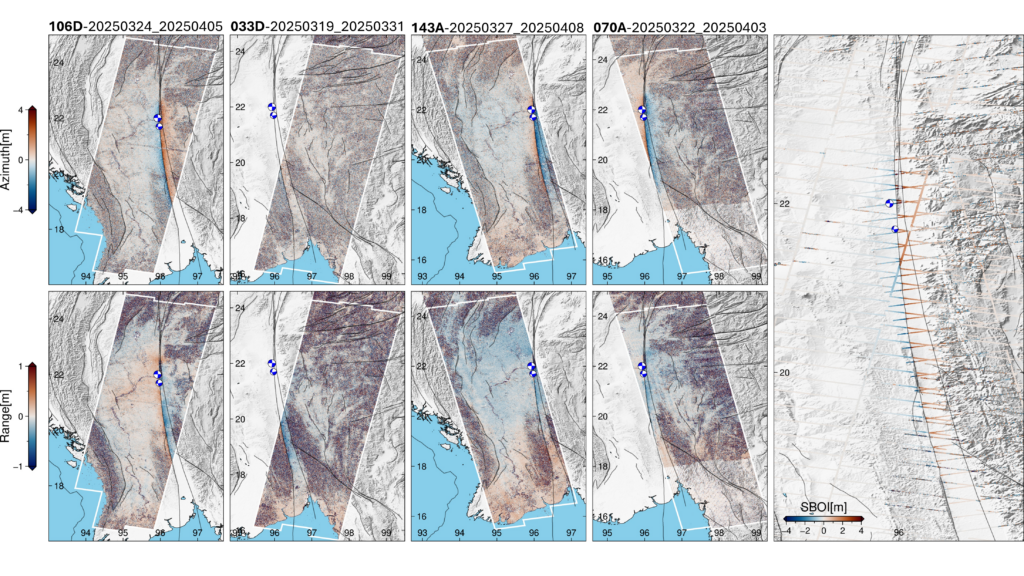 Figure 1: Data from four Sentinel-1 tracks (2 ascending and 2 descending), each consisting of three standard LiCSAR frames (~13 bursts per subswath), were used to cover the deformation zone. Azimuth offsets (top panels) capture along-track (north–south) deformation. Range offsets (bottom panels) represent Line-of-Sight (LoS) deformation. Burst Overlap Interferometry (right) provide high-resolution along-track deformation. Red indicates southward, and blue indicates northward motion.
Figure 1: Data from four Sentinel-1 tracks (2 ascending and 2 descending), each consisting of three standard LiCSAR frames (~13 bursts per subswath), were used to cover the deformation zone. Azimuth offsets (top panels) capture along-track (north–south) deformation. Range offsets (bottom panels) represent Line-of-Sight (LoS) deformation. Burst Overlap Interferometry (right) provide high-resolution along-track deformation. Red indicates southward, and blue indicates northward motion.
